PROTECT YOUR DNA WITH QUANTUM TECHNOLOGY
Orgo-Life the new way to the future Advertising by AdpathwayDon’t let ample rainfall and cold weather get in the way of your composting. The October garden is often full of debris, as summer crops wind down and leaves fall to the ground. What better way to recycle the waste than to turn it into compost?
Instead of using traditional piles, try other October composting methods that require less maintenance. We’ll cover how to compost in a variety of ways that’ll suit your needs, from cold composting to trenches. No matter if your yard is cold and frosty or wet and warm, there’s sure to be a way to repurpose garden waste into nutrient-rich compost.
Compost works by fostering bacteria, fungi, and other microorganisms, as well as worms and insect larvae. They convert large waste particles into smaller ones that plant roots can access. Create compost regularly to develop a healthy, fertile garden, and divert waste from landfills in the process.
EM-1 Compost Starter Concentrate

- Suitable for compost bins, toilets, and worm farms
- Contains 80+ beneficial microbes for fast, effective composting
- Reduces unpleasant odors naturally
- 32 oz concentrate makes up to 22 gallons
- USDA Organic, chemical-free, and safe to use
October Garden Conditions
The October garden is great for growing fall crops, and challenging for those that need warmth to thrive. It’s also a great time for composting. Watch for excess moisture, frosty weather, and pests during the fall.
Ample Rainfall
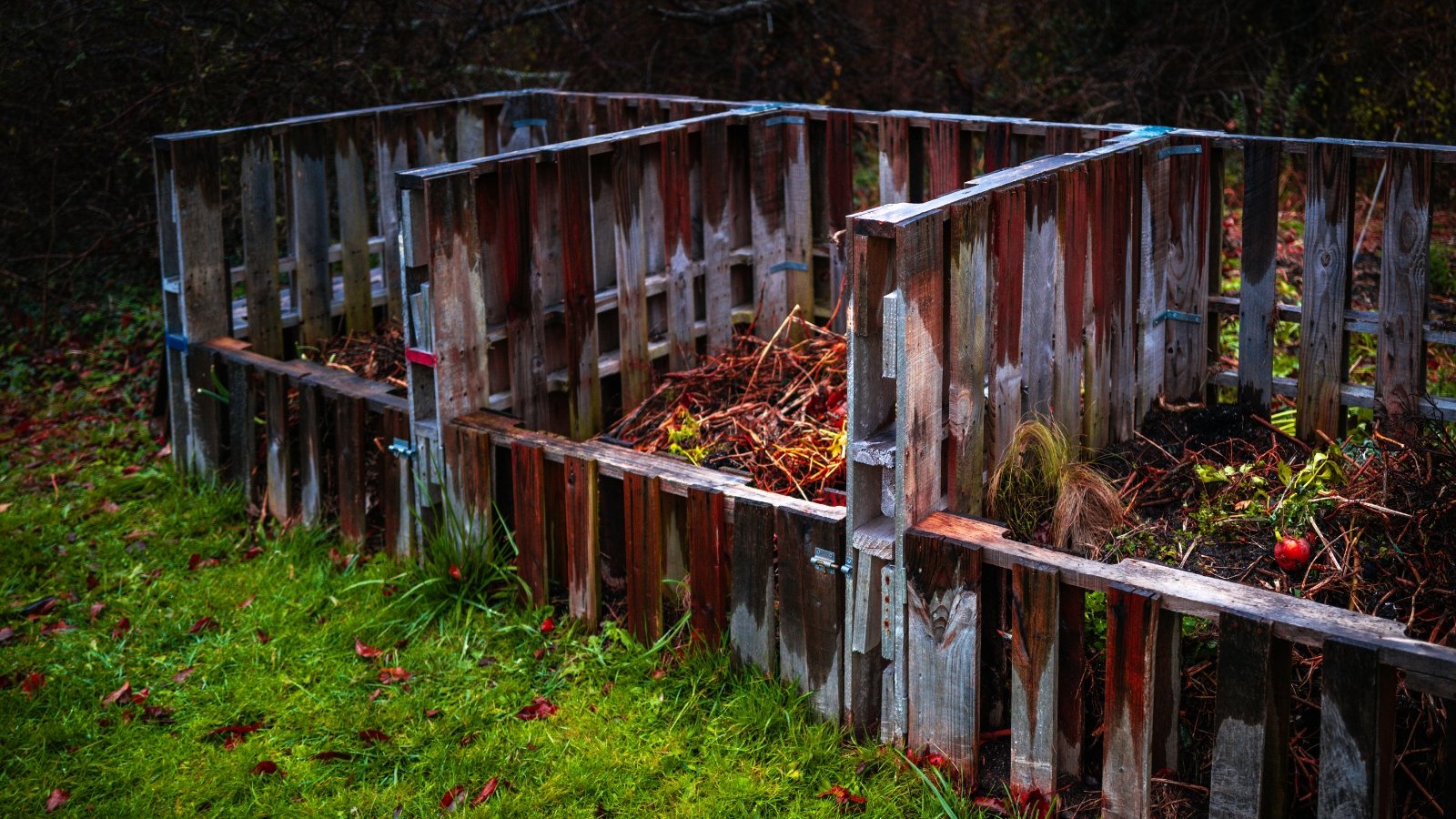 Heavy rains may make compost too wet temporarily.
Heavy rains may make compost too wet temporarily.Some areas of the U.S. are wet and rainy during October. Ample rains and wet storms arrive in full force, blanketing the earth in water. Compost needs to be 50% moist, like a wrung-out sponge, but it doesn’t need to be soggy.
Other areas are arid during the fall, with little rainfall. October composting in these regions, like the northern and midwestern states, requires additional irrigation.
Cold Weather
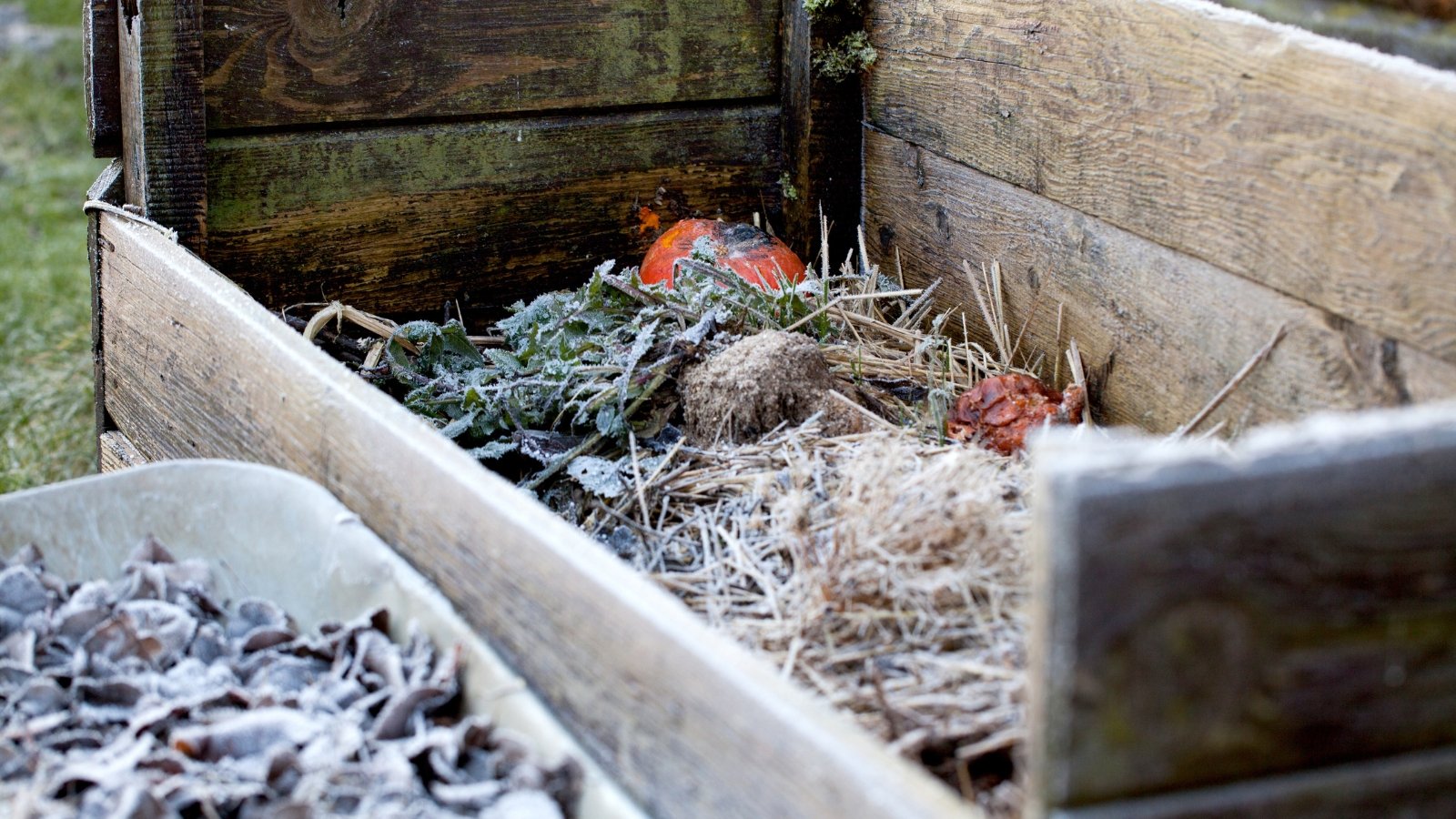 Freezing nights can slow down natural decomposition processes.
Freezing nights can slow down natural decomposition processes.Cold weather is common throughout the U.S. in October, except in warm tropical regions of Florida and Hawaii. The end of the month is chilly and frigid, which makes it difficult to stay warm while trick-or-treating on Halloween!
The same is true for compost. Cool weather is fine, as compost piles naturally generate heat as they work. Freezing temperatures, however, will cause composting processes to slow down or halt altogether.
Burrowing Rodents
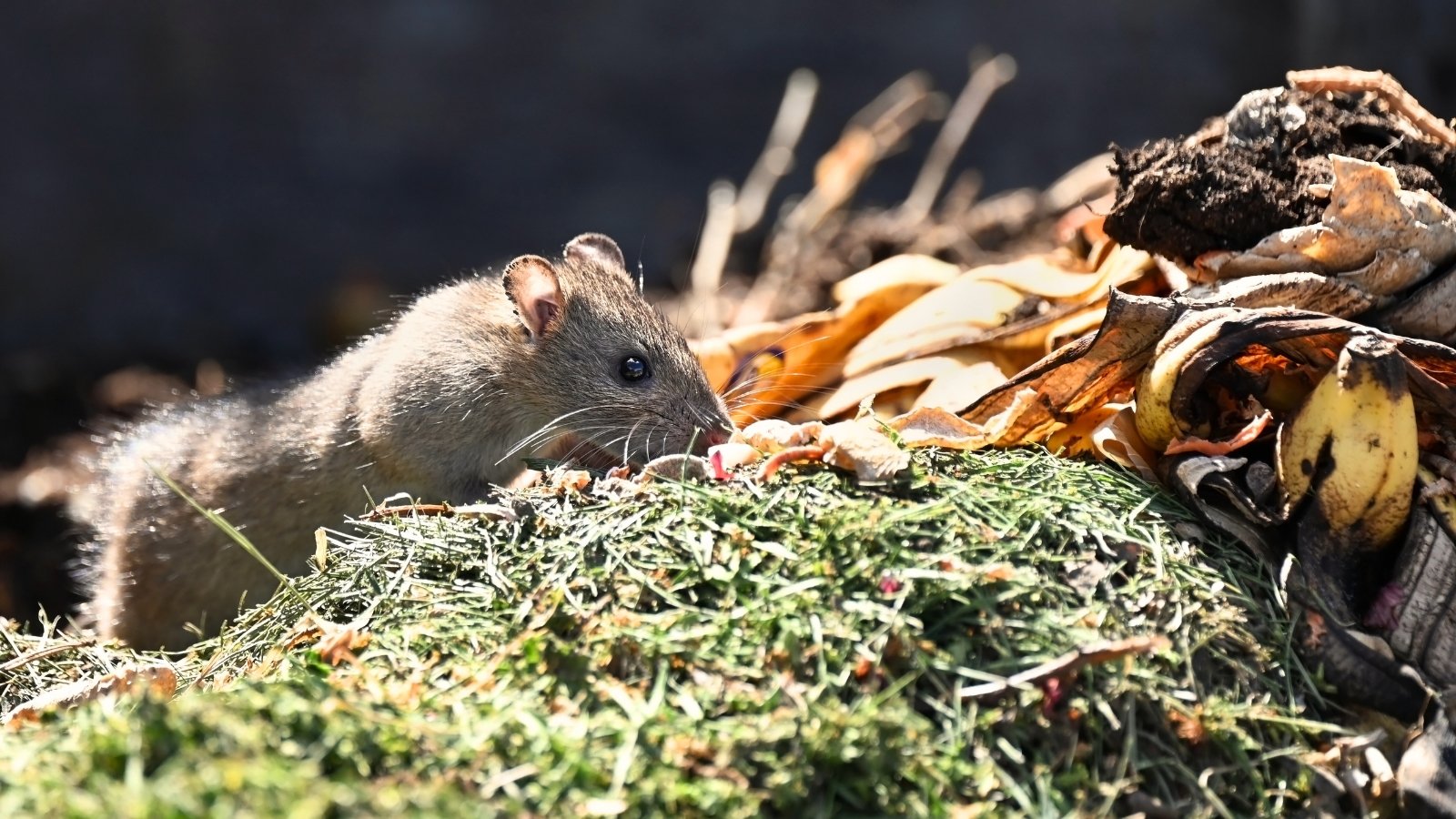 Secure materials tightly to discourage rodent foraging habits.
Secure materials tightly to discourage rodent foraging habits.Rodents are a challenge, too. They are burrowing and gathering resources in October as they prepare for the oncoming winter season. When composting, it’s important to safeguard your setup from these pesky rodents.
Mice, rats, and squirrels are all possible pests, as they’ll dig around in your piles. In regions near farmland and wild spaces, voles and moles may also poke around in them.
What to Do
Use the month of October to recycle crop debris from the summer and to prepare new beds for planting next spring. Watch for soggy conditions, rodents, and cold weather, and use these tactics to ensure healthy October composting this month.
Discourage a Soggy Pile
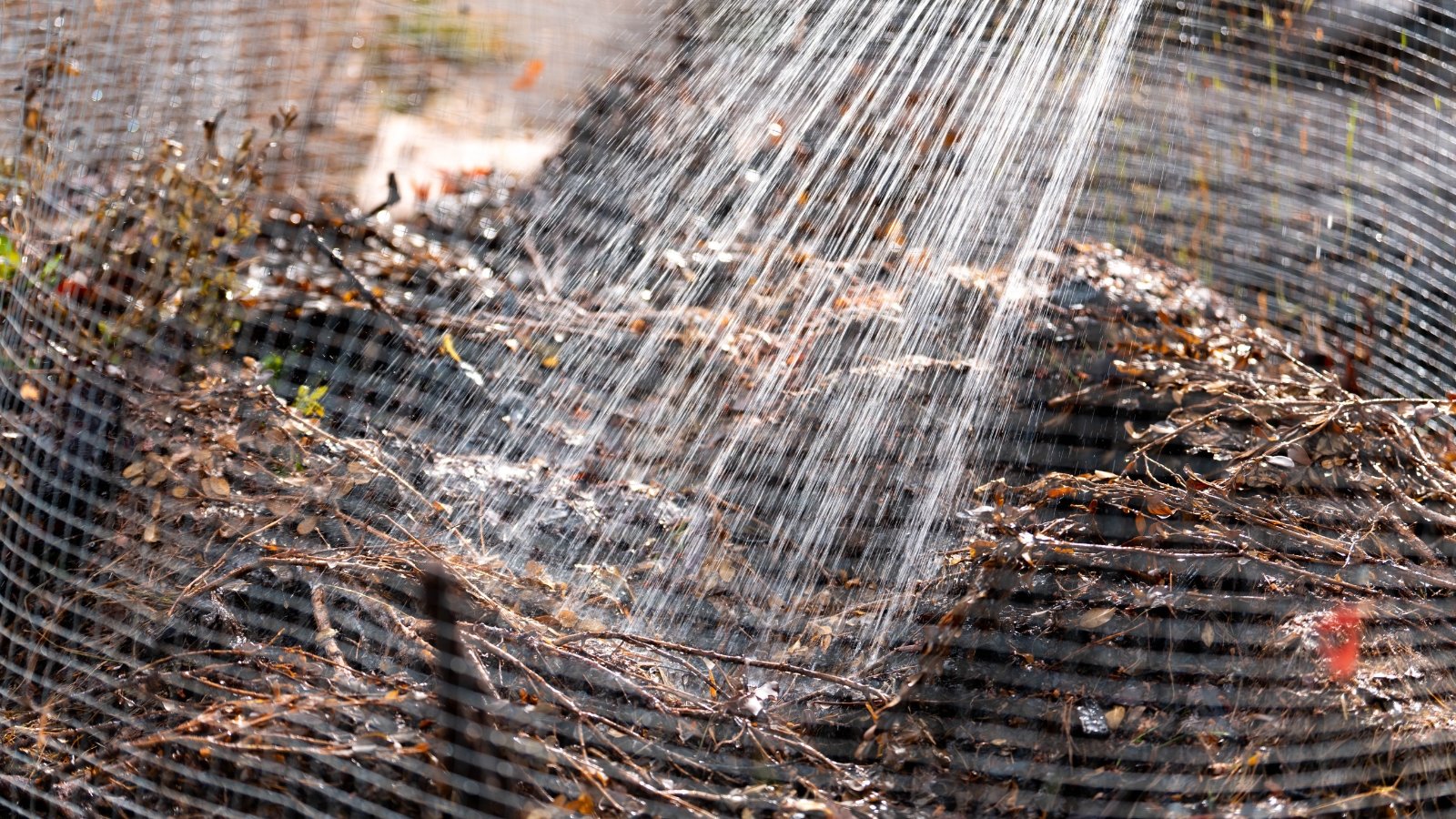 Keep material damp but avoid turning it into mush.
Keep material damp but avoid turning it into mush.Soggy piles turn into wet messes, and they may grow anaerobic without turning. Anaerobic compost lacks oxygen, and its rotten smell attracts pests. It’s best to keep the piles moist, but not soggy.
Check the moisture levels by grasping a clump of the stuff. If water falls out, it’s sufficiently moist. If it feels crumbly and dry, it’s time to add water.
Protect the compost from excess rainfall with a cover or tarp. Set a container on top of each pile, or use a tarp to cover many of them. If a pile is too soggy, turn it with a pitchfork to aerate it.
Turn Daily
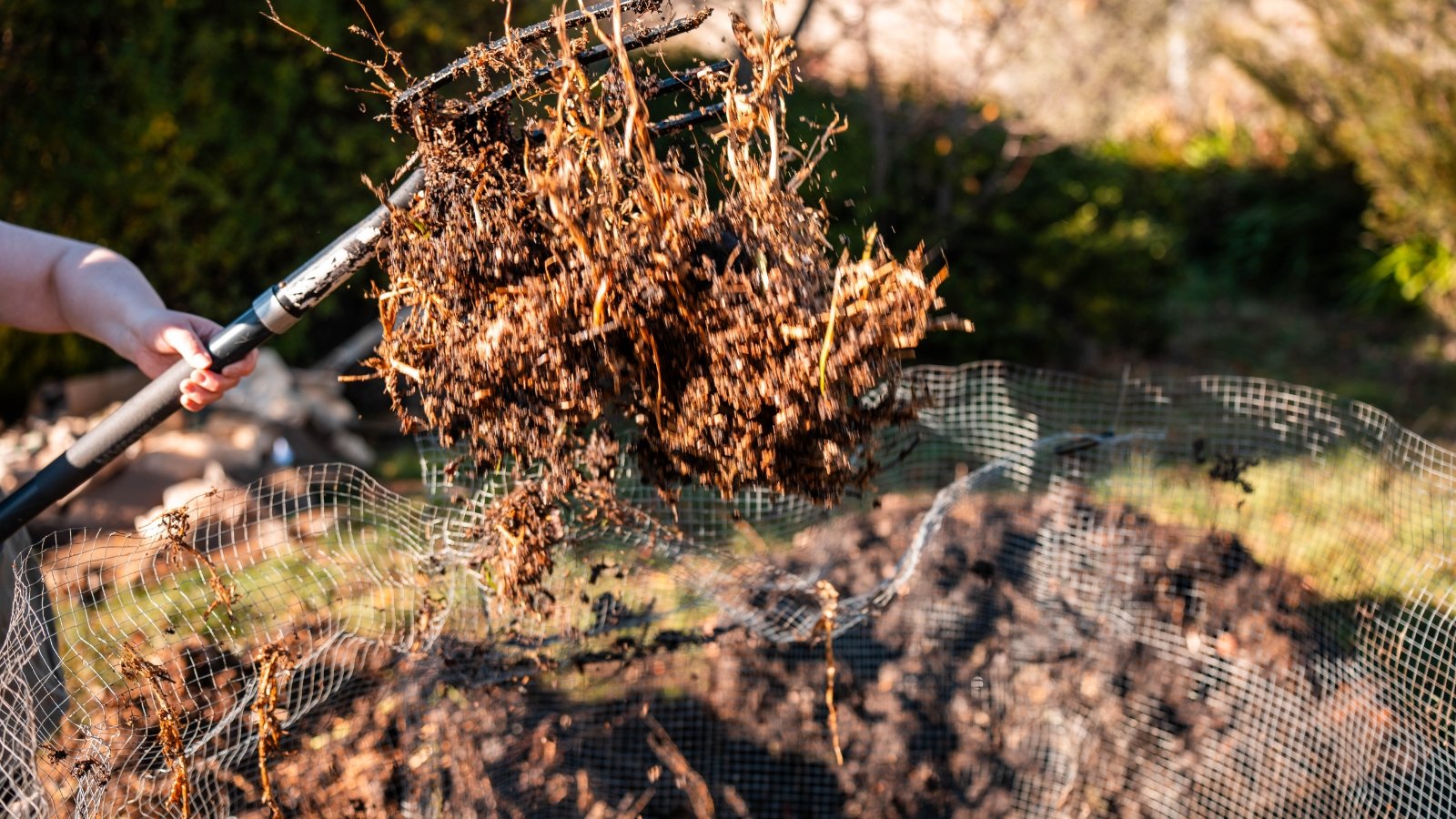 Pitchfork work helps spread heat evenly and break down.
Pitchfork work helps spread heat evenly and break down.Daily turning is necessary for hot compost, which is the quickest form of October composting. It generates heat, which speeds up the breakdown process.
This feedback loop leads to rapid decomposition. High temperatures cause microbes to work quickly, which generates heat, which leads to more microbial activity. Too much heat will kill the microbes, and that is where the act of turning comes in.
Turning aerates the pile, feeding the microbes with oxygen. It prevents anaerobic conditions, keeping the compost aerobic and good-smelling, like damp earth.
To turn, use a pitchfork. Stab it into the bottom of the pile and turn the contents in on themselves. Go around each pile, repeating the process until you rotate all of the debris.
Put Fall Leaves to Use
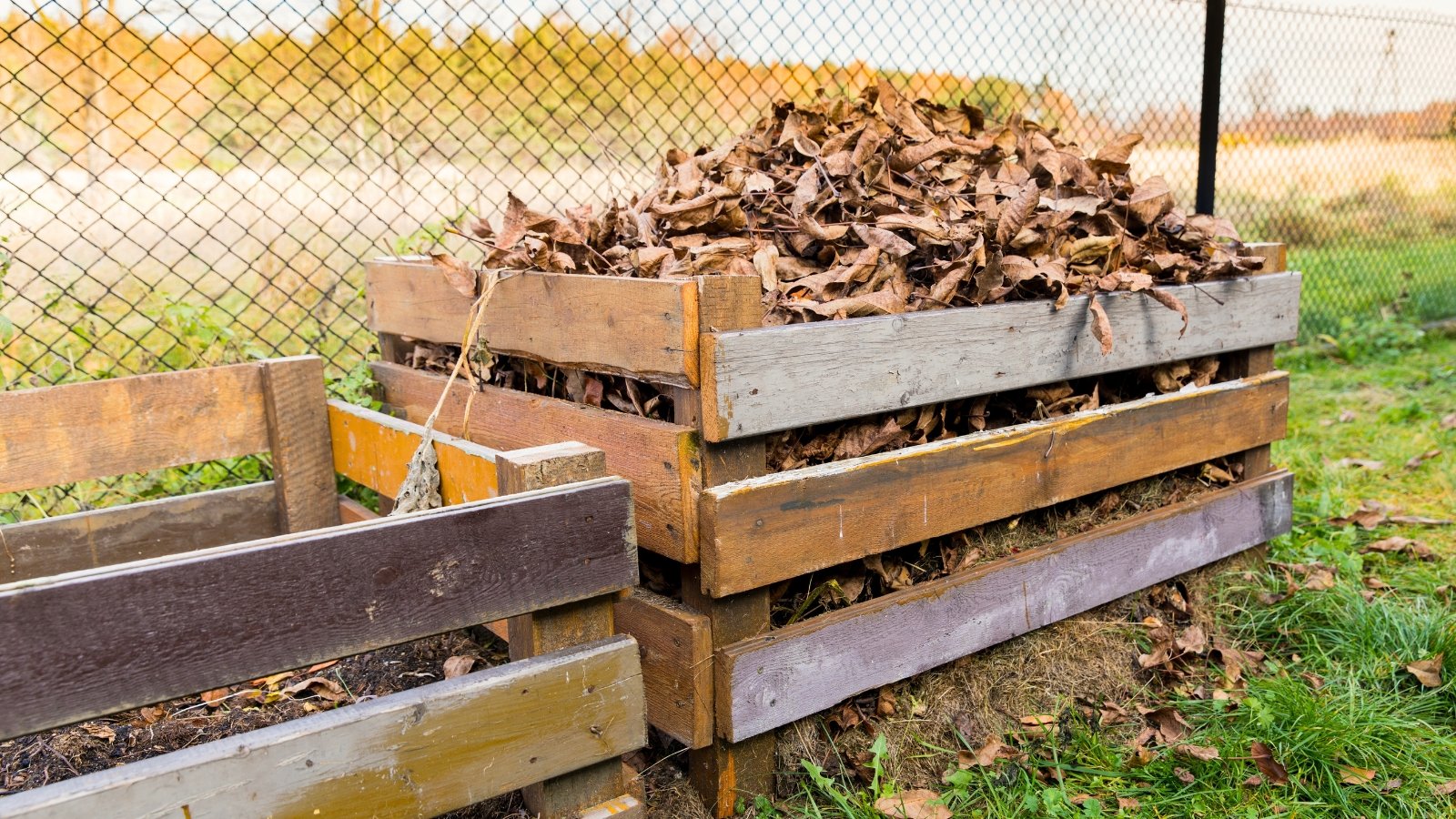 Fallen leaves balance green scraps for healthy decomposition.
Fallen leaves balance green scraps for healthy decomposition.Fall leaves drop to the ground in abundance during October. They change from green to orange, yellow, red, or brown before falling off the deciduous trees. These leaves make excellent composting material.
Fallen leaves are rich in carbon, making them a “brown” component. Composting relies on two substances, “greens” and “browns.” Green waste is rich in nitrogen, while brown waste is rich in carbon. Compost needs an equal balance of carbon and nitrogen.
For every shovelful of green waste from kitchen scraps or grass clippings, add two to three shovelfuls of fall leaves. This ratio will lead to a healthy decomposition that’s free of rotten odors.
Warm the Site
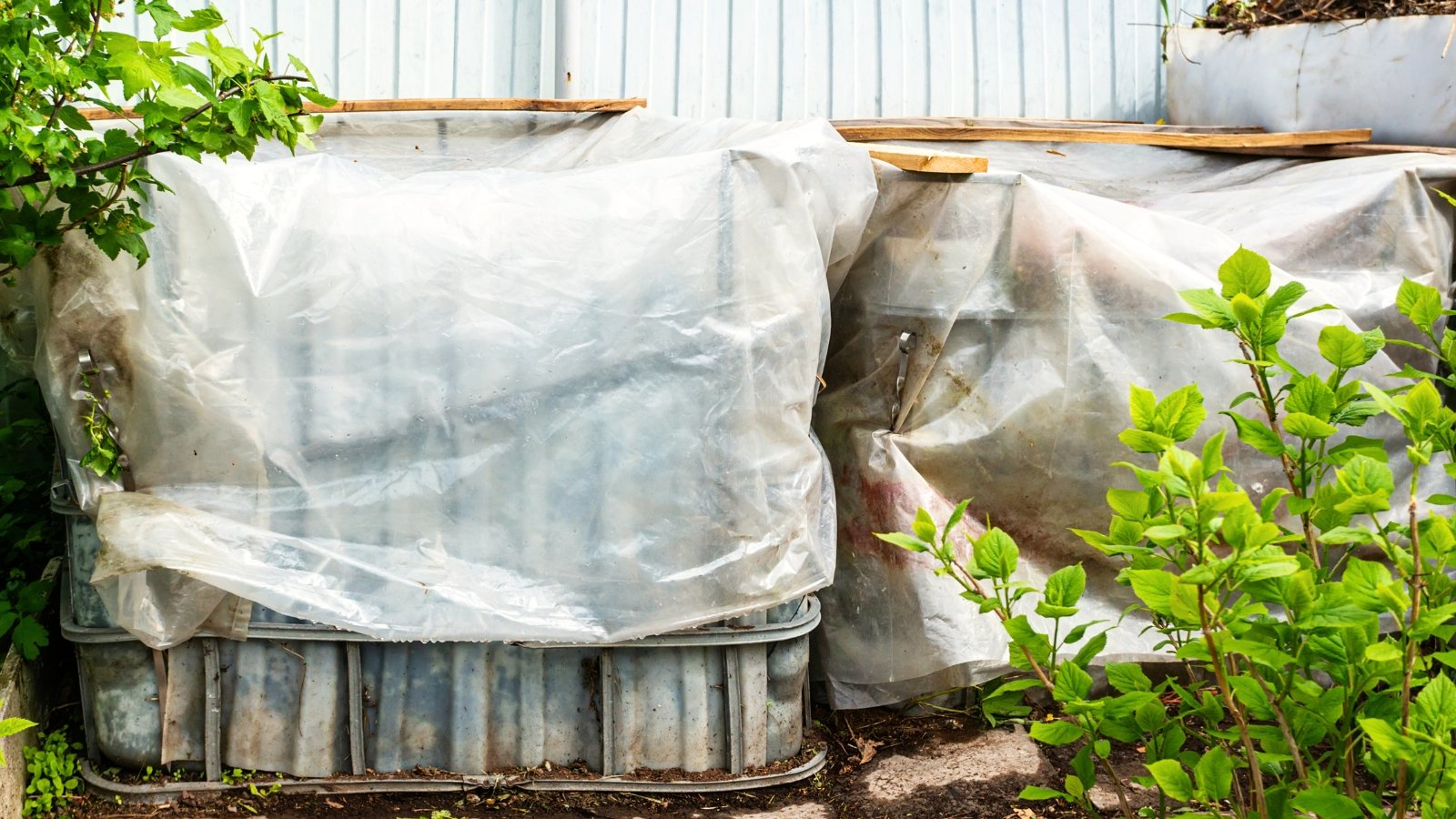 Frosts won’t penetrate when piles are properly insulated.
Frosts won’t penetrate when piles are properly insulated.Cold temperatures cause composting organisms to slow their work, leading to stagnant piles with frozen debris. Rotating it daily will help, but it won’t prevent hard freezes from reaching the inside of the piles.
To continue composting through October, use a protective cover to insulate and warm your compost. Blanket it with burlap, old rugs, or carpets. Remove the cover to turn and water the pile, then place it back on top during frosts and freezes.
Or, use fallen leaves to insulate the site. Cover each pile with thick layers of leaves, and tamp them down so they stay put. Rake them off for turning and watering, then place them back when you’re through.
Safeguard from Rodents
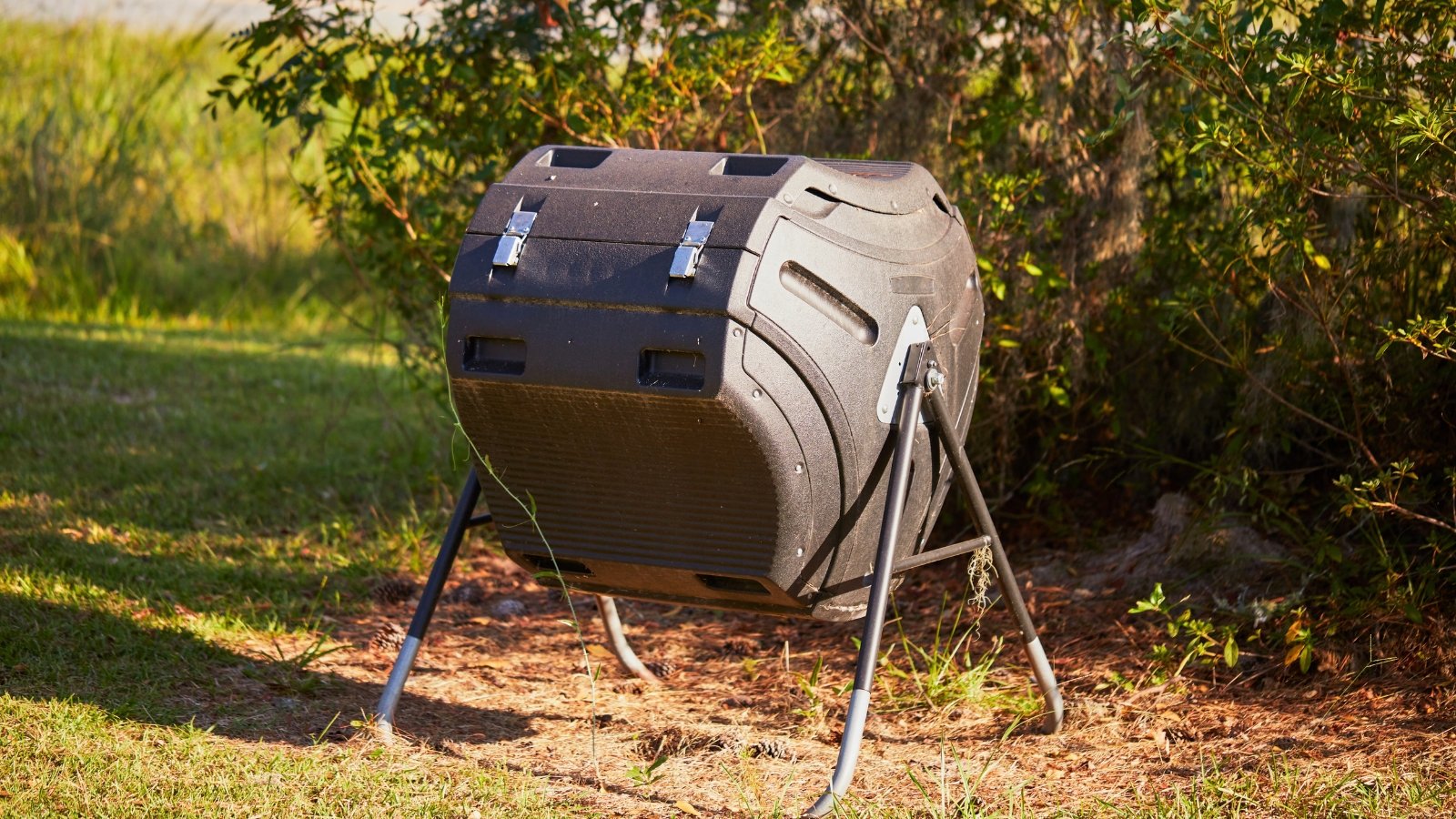 Lifting piles reduces rodent access to compost materials.
Lifting piles reduces rodent access to compost materials.Don’t get discouraged if rodents reach your October composting site. There are some simple ways to prevent them from returning. Start by lifting the compost onto a raised surface, like a wooden pallet. Cover the surface with fine wire mesh, and set the debris on top.
Over the compost, place a protective cover that masks the smell from rodents. Use a large plastic pot, or find a ready-made option like an Earth Machine compost bin or a tumbler.
Compost the Lazy Way
Do you want to compost without the hassle? Try these lazy techniques that rely on time rather than labor to work. They’ll work passively this October while you’re enjoying the warmth of the indoors.
Cold Compost
 Minimal attention is required for slow compost transformation.
Minimal attention is required for slow compost transformation.Cold compost requires less turning to work. You don’t need to rotate your piles daily; you only need to move them once a month. The debris will decompose slowly, taking six months or longer to turn into rich, crumbly humus.
Cold compost doesn’t use heat to work, as it relies on microorganisms and animals that are active at lower temperatures. Simply keep it moist and let it sit, then harvest it when it’s ready in a few months.
Leaf Mold
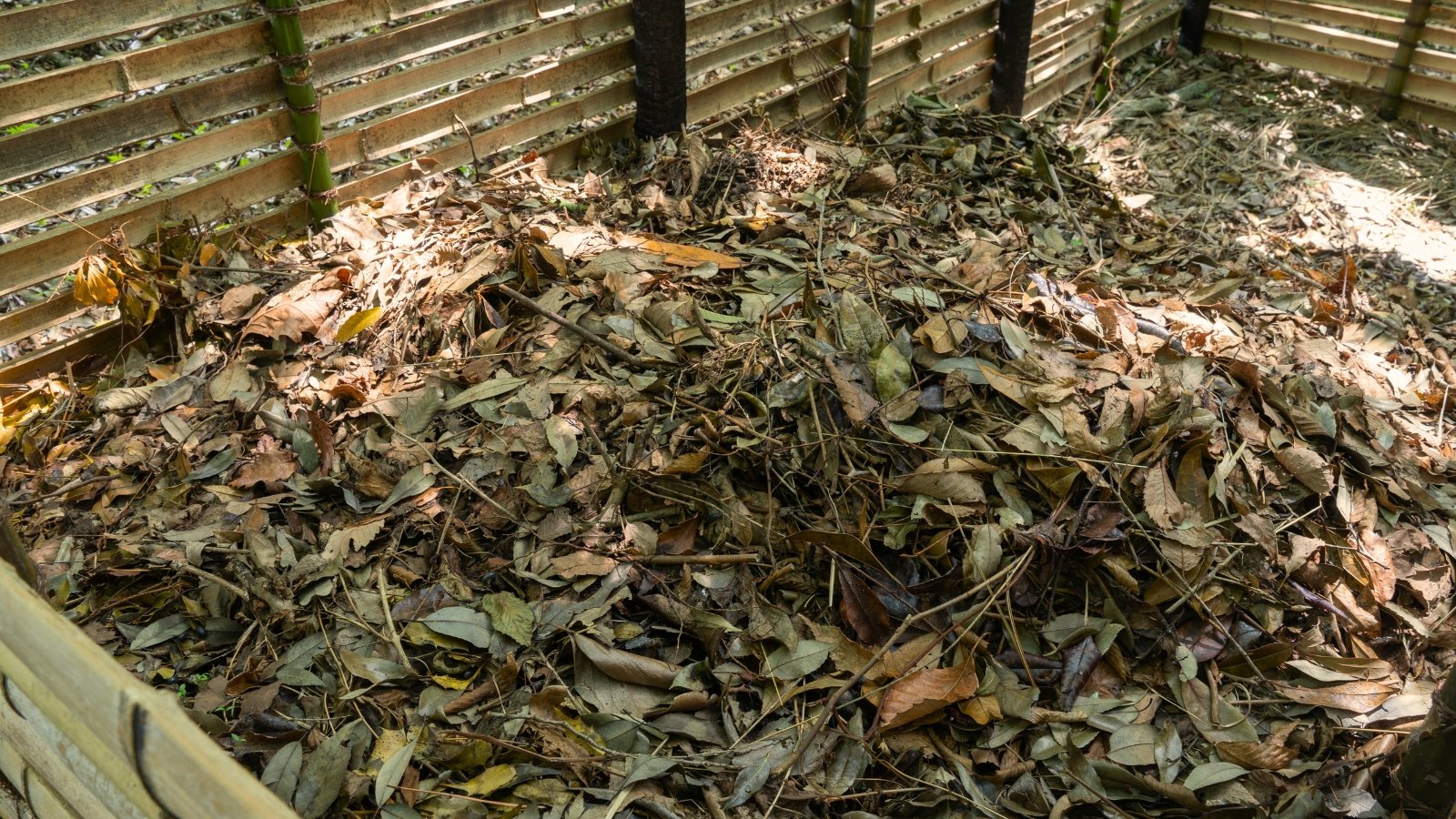 Simple leaf piles transform into soil amendments.
Simple leaf piles transform into soil amendments.Leaf mold is similar to compost, except it consists entirely of leaves. If you have lots of them and little other waste, simply make leaf mold instead of compost!
The process is similar. Make a pile of leaves, keep them moist, and turn them as often as possible. They’ll decompose throughout the cold months, and you’ll have a black, earthy amendment come spring.
Trench Composting
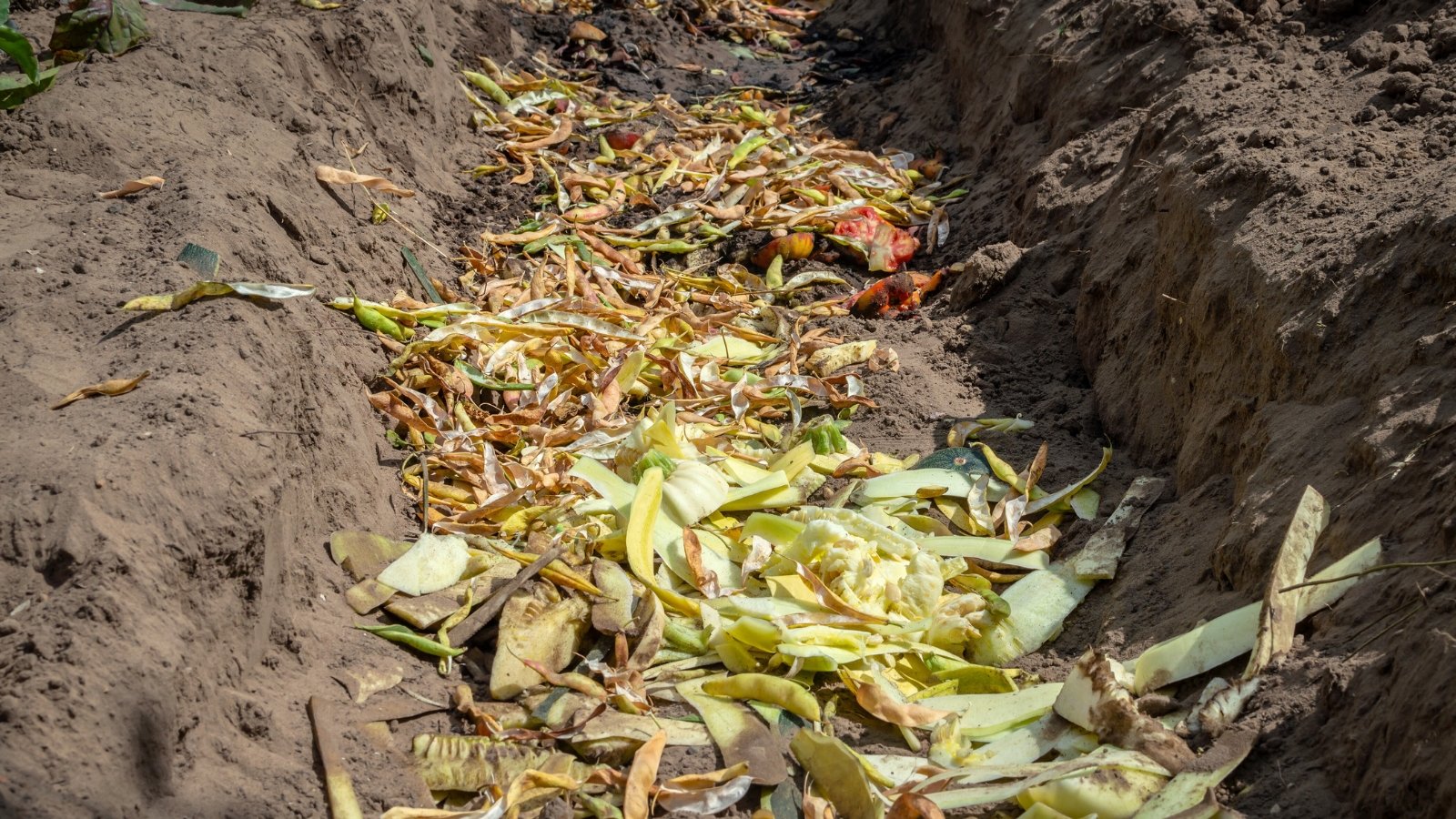 Bury yard debris deeply to discourage persistent rodent visitors.
Bury yard debris deeply to discourage persistent rodent visitors.If rodents are particularly troublesome, consider burying the debris in trenches or holes and letting soil organisms do the work. This method works without watering or turning, making it maintenance-free! Simply dig a hole, bury the waste, and cover the soil with mulch.
Dig six inches or deeper to prevent pests from uncovering the debris. Use a few holes spread throughout the yard for continuous composting, or use trenches to recycle large amounts of organic matter.
Key Takeaways
- Wet, cold weather doesn’t mean it’s time to stop October composting. Cover the area to keep the site warm and protected from rainfall.
- Watch for pesky rodents, like mice and rats, and keep them away with wire mesh and protective covers.
- Hot compost is quick and efficient. Less labor-intensive are trench and cold composting.
- Don’t let fallen leaves go to waste. Use them for composting, or make leaf mold out of them.


 1 day ago
7
1 day ago
7
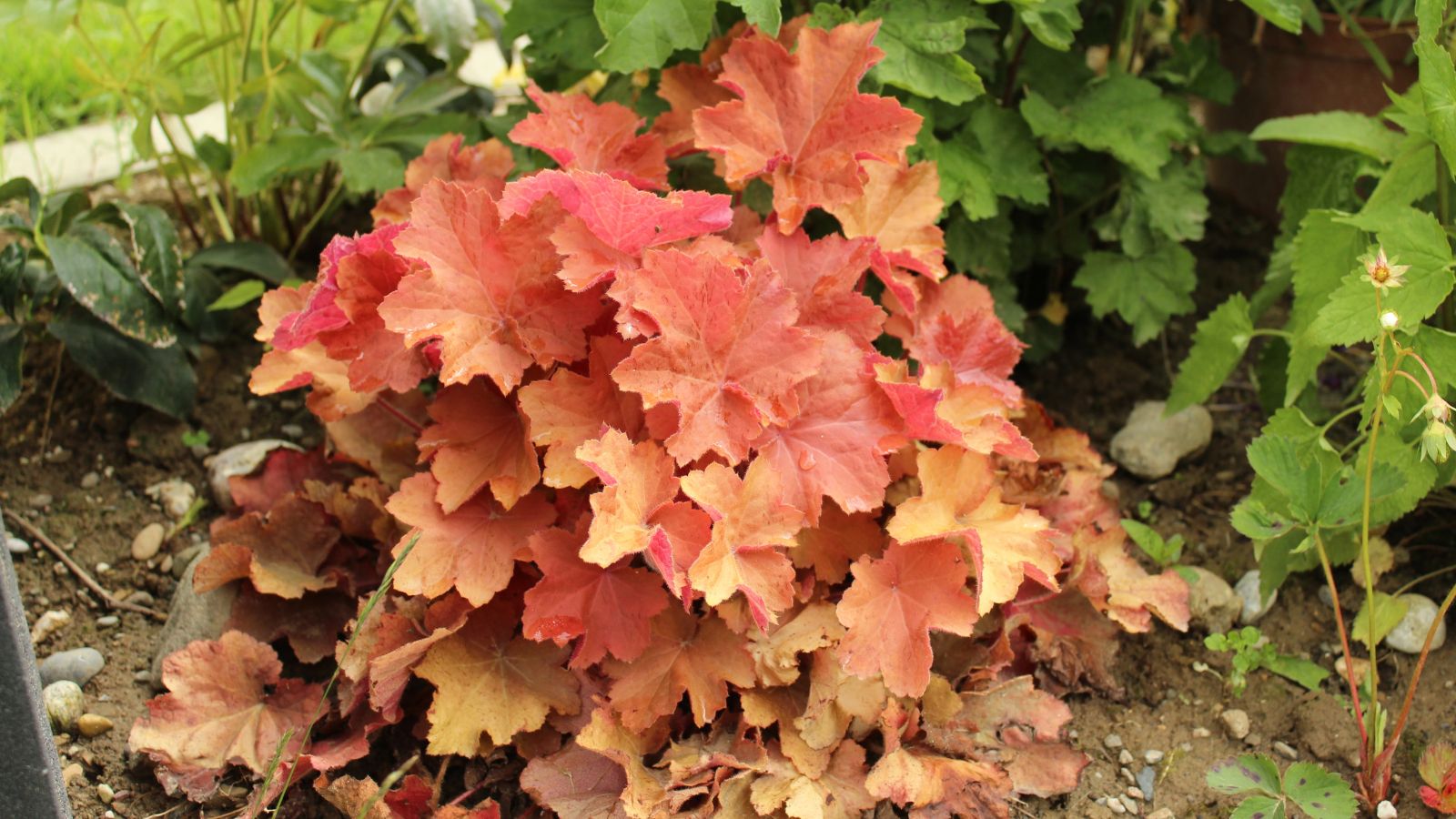
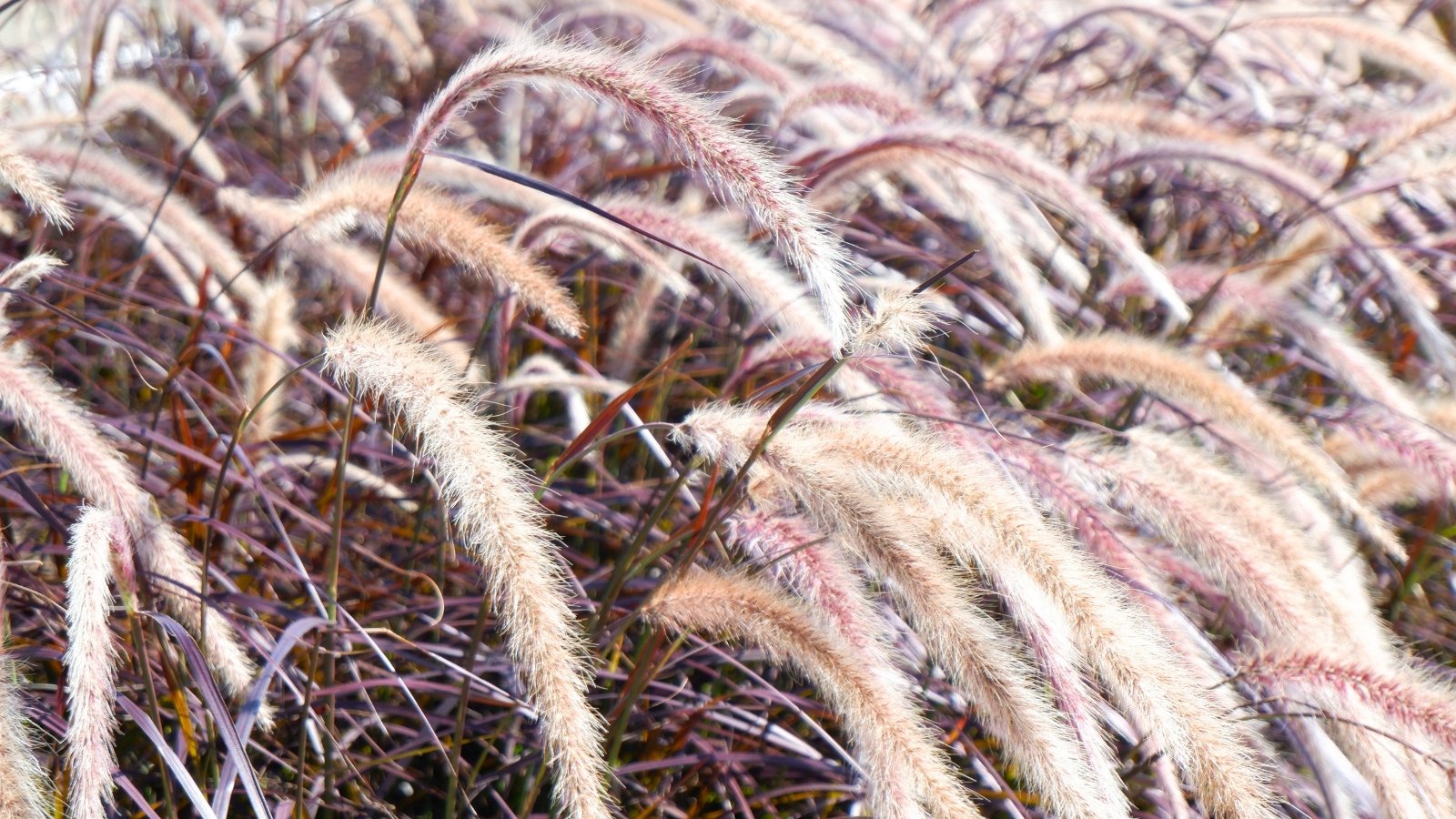

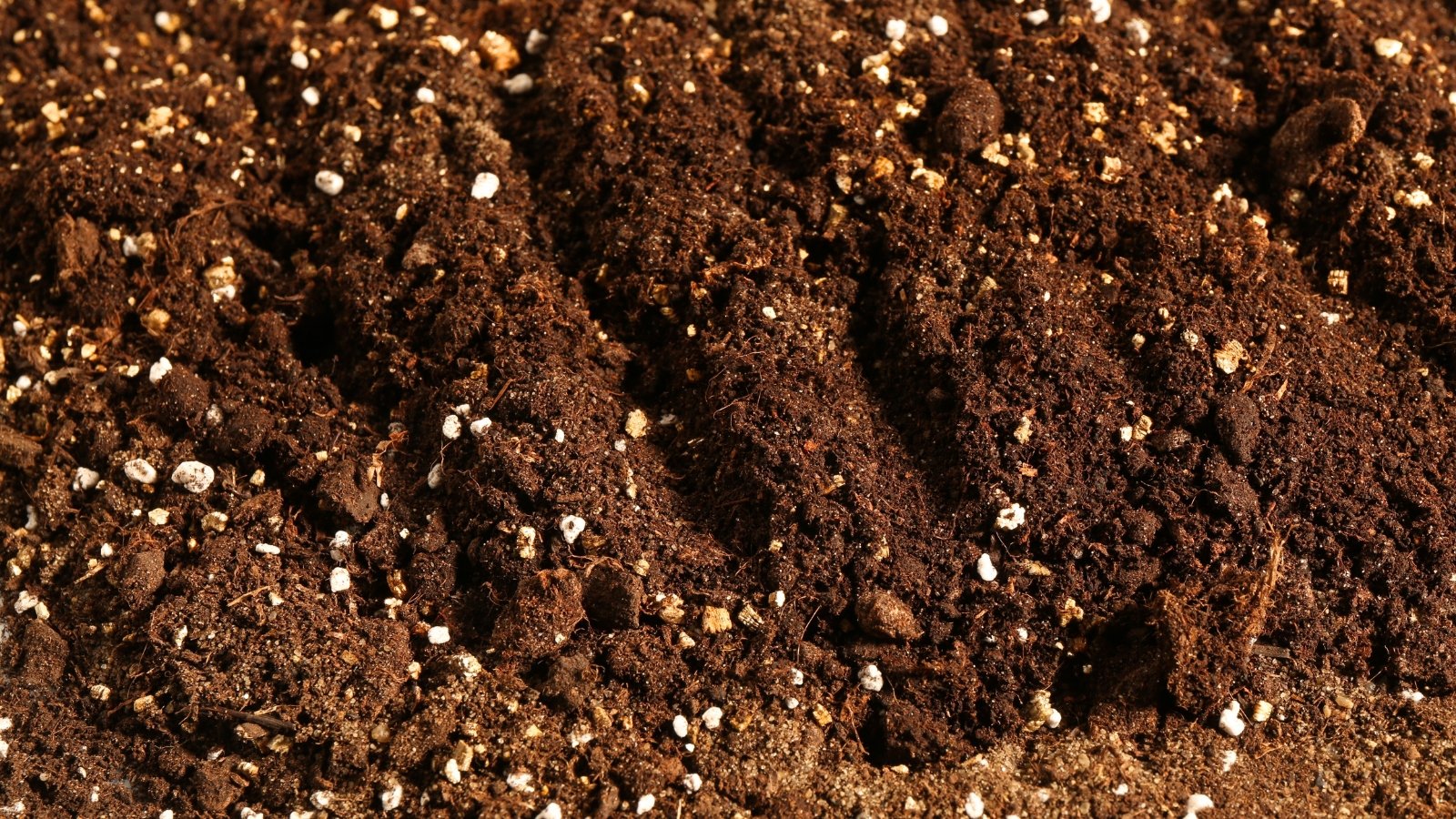
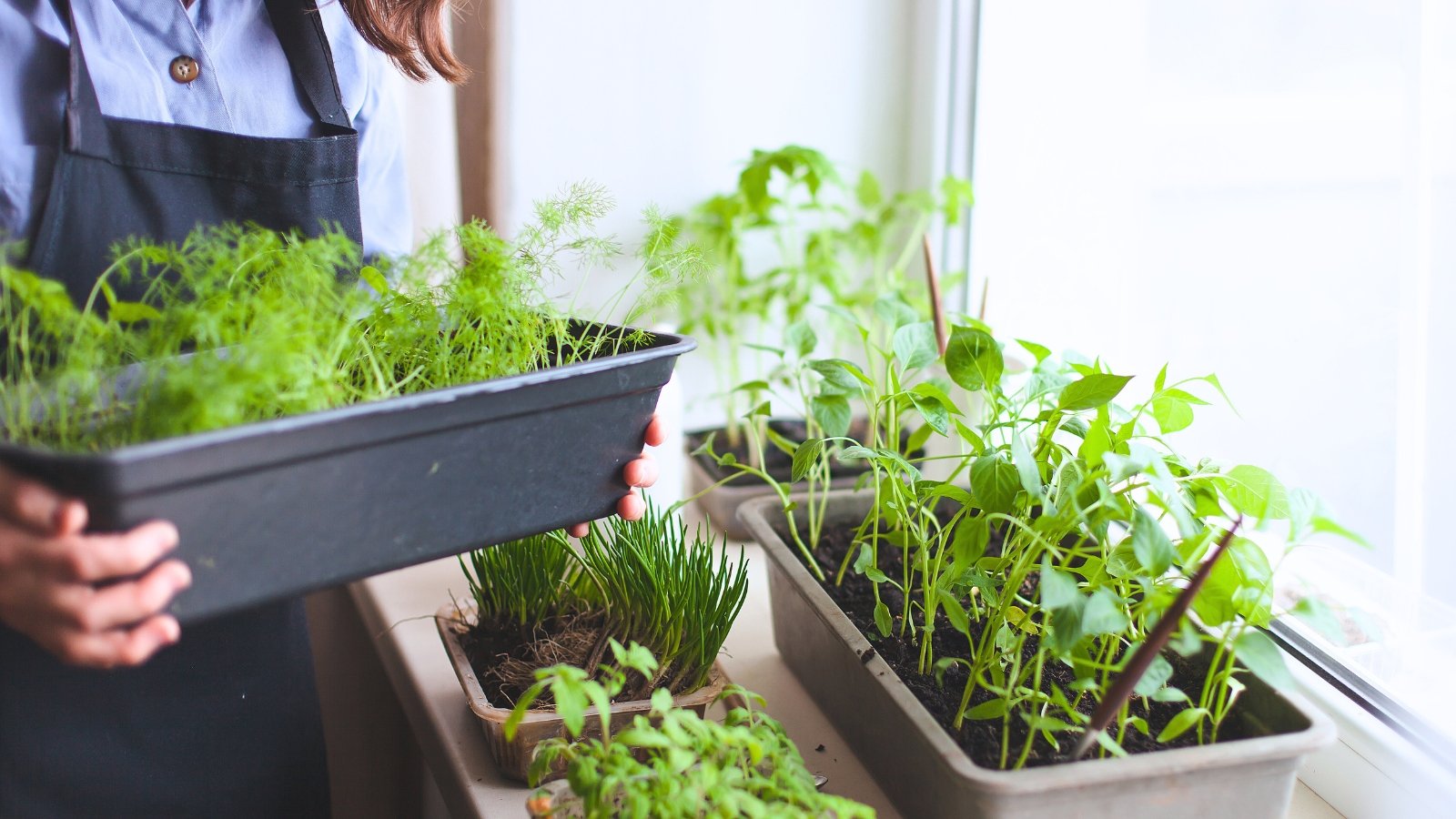
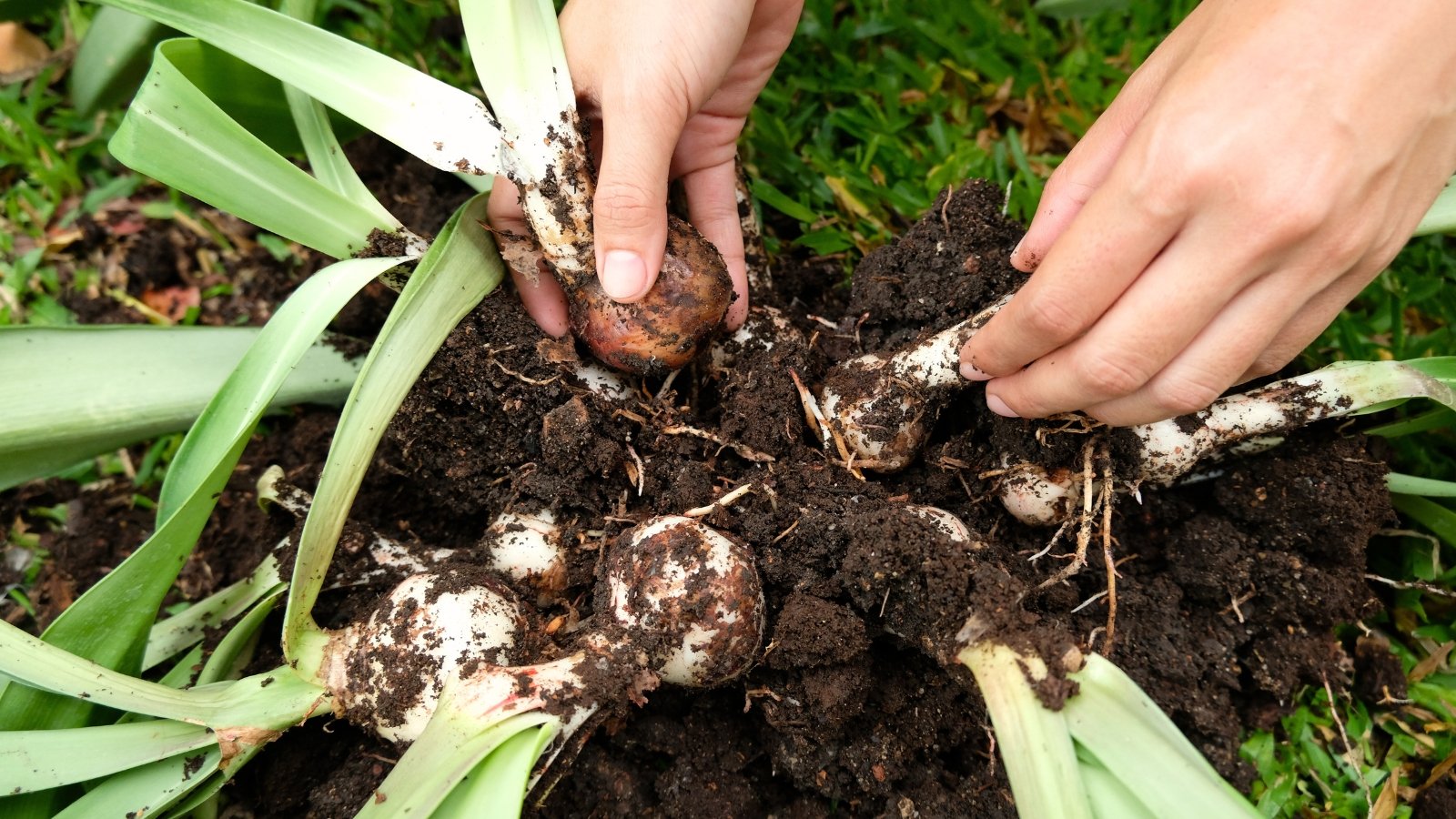















 English (US) ·
English (US) ·  French (CA) ·
French (CA) ·